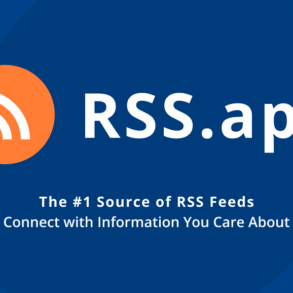AI Meets Social Networking
Last updated:
OpenAI is reportedly in the early stages of developing a social media platform similar to X (formerly Twitter), aiming to rival giants like X and Meta. The prototype’s focus on image generation and AI-assisted content creation suggests a unique twist in the social networking landscape. With a potential integration into ChatGPT and ongoing rivalry with Elon Musk, OpenAI’s venture could significantly impact the AI and social media space.
Introduction to OpenAI’s Social Network Initiative
OpenAI’s latest foray into the realm of social media marks a bold expansion of its technological ambitions. In an era dominated by platforms like X, formerly known as Twitter, OpenAI seeks to redefine the social network landscape through the integration of its cutting-edge AI capabilities. As reports suggest, OpenAI’s initiative is centered on creating a platform similar to X, with emphasis on image generation and a unique social feed experience. This step comes at a time when the AI landscape is witnessing heated competition, with figures like Elon Musk and Mark Zuckerberg leading dominant social media giants X and Meta [source].
Sam Altman, the CEO of OpenAI, is keen on exploring new frontiers, as reflected by his pursuit of feedback for this nascent project. The initiative’s success could potentially leverage OpenAI’s strengths in AI to offer something distinctly different from what users are accustomed to on traditional platforms. Whether the outcome will manifest as a standalone application or as an extension of ChatGPT remains subject to internal deliberations. The rivalry intensifies as OpenAI ventures into territories that were previously the playground of giants like X and Meta [source].
The rationale behind this strategic move is multifaceted, encompassing the desire to access real-time data for AI training, addressing market gaps, and fostering organizational growth. However, this venture is not devoid of challenges. Establishing a foothold in a market controlled by such established players as Elon Musk’s X and Mark Zuckerberg’s Meta is no small feat. OpenAI’s unique proposition lies in its implementation of AI for content creation, which could offer a refreshing alternative to users seeking innovative interactions on social platforms [source].
The trajectory of this initiative remains uncertain, as OpenAI navigates uncharted waters. Speculation surrounding the eventual shape of this platform, its integration capabilities, and the broad reception it will receive highlights the uncertainty inherent in such bold ventures. Will OpenAI succeed in transforming its vision into a widely adopted platform? Only time will tell, as the dynamics of AI and social media continue to evolve. OpenAI’s entry into this realm reflects not only ambition but a strategic alignment with futuristic AI-driven content experiences [source].
Motivations Behind OpenAI’s New Platform
OpenAI’s decision to explore the development of a new social network platform is motivated by multiple strategic factors. With this move, OpenAI aims to position itself as a significant player in the social media domain, potentially rivaling industry giants like X (formerly Twitter) and Meta. This venture aligns with OpenAI’s broader strategy to access real-time data, which is crucial for the ongoing training and refinement of its AI models [1](https://www.theverge.com/openai/648130/openai-social-network-x-competitor). By establishing its own network, OpenAI seeks to expand its data resources and further its competitive advantage in the generative AI market, where it faces stiff competition from Elon Musk’s xAI and other entities [1](https://www.cnbc.com/2025/04/15/openai-considering-own-social-network-to-compete-with-elon-musks-x.html).
Furthermore, OpenAI’s venture into social networking can be seen as a bold expansion strategy that diversifies its technological capabilities and market reach. The platform’s emphasis on AI-assisted content creation and image generation suggests a novel approach that could differentiate it from existing networks. With these innovations, OpenAI hopes to revolutionize how users create and consume content, potentially fostering new digital communities and sparking innovative forms of artistic expression [1](https://www.theverge.com/openai/648130/openai-social-network-x-competitor). This development is not just a technical endeavor; it is also a strategic response to opportunities for growth outside the traditional AI applications in which OpenAI currently excels.
The motivations behind OpenAI’s move also include the potential to directly challenge Elon Musk and Mark Zuckerberg, both significant figures in the current social media landscape. CEO Sam Altman’s rivalry with these tech magnates is well documented, and OpenAI’s platform could intensify this competition by entering a market where Meta and X have established dominance [1](https://www.theverge.com/openai/648130/openai-social-network-x-competitor). By leveraging its expertise in AI, OpenAI might offer unique features that set its platform apart, potentially disrupting the market and challenging the existing status quo.
Comparing OpenAI’s Platform to Existing Social Networks
OpenAI’s potential entry into the social networking space signifies a bold move to challenge the constructed norms of current platforms like X (formerly Twitter) and Meta. By developing a social network, OpenAI is venturing into a territory traditionally dominated by established giants, aiming to carve a niche through its AI expertise. This platform, still in its nascent stage, promises functionalities that leverage OpenAI’s strengths in AI and image generation [The Verge](https://www.theverge.com/openai/648130/openai-social-network-x-competitor). The integration of these technologies could potentially facilitate new forms of interaction and content creation, distinguishing it from the offerings of its competitors.
A distinctive aspect of OpenAI’s impending social network is the possible synergy with their existing AI tools like ChatGPT. Such integration could redefine user interactions, offering personalized content tailored by AI algorithms [The Verge](https://www.theverge.com/openai/648130/openai-social-network-x-competitor). This innovation might not only captivate tech-savvy users but also appeal to those looking for more enriched online experiences. Additionally, positioning this platform within a saturated market hints at OpenAI’s strategic ambition to rival and possibly surmount platforms like X and Meta in offering unique user experiences.
The rivalry between Sam Altman, CEO of OpenAI, and his contemporaries, Elon Musk and Mark Zuckerberg, provides an intriguing backdrop to this narrative. Engaging actively in the social network domain could intensify competition and might shift existing social media dynamics [The Verge](https://www.theverge.com/openai/648130/openai-social-network-x-competitor). As a result, OpenAI’s push represents more than a mere product launch; it is a strategic maneuver that speaks to broader ambitions, including real-time data acquisition for enhancing AI models and creating potential new revenue channels.
However, questions loom regarding the project’s execution and market penetration strategies. Breaking into a market with deeply entrenched players like X and Meta necessitates not just innovation but significant investments in marketing, user acquisition, and content moderation infrastructure [The Verge](https://www.theverge.com/openai/648130/openai-social-network-x-competitor). Furthermore, concerns related to data privacy and ethical AI use remain paramount in navigating user trust and regulatory landscapes, which will be critical to OpenAI’s success.
In summary, OpenAI’s foray into social networking reflects its ambition to redefine what a social network can be in the AI-driven age. Whether it materializes into a standalone app or integrates within existing platforms like ChatGPT, this venture’s trajectory will be pivotal in shaping its competitive stance against industry titans. As this project evolves, it will undoubtedly contribute to the ongoing dialogue around privacy, innovation, and competition in the digital world [The Verge](https://www.theverge.com/openai/648130/openai-social-network-x-competitor).
The Role of AI in Content Creation and User Experience
Artificial Intelligence (AI) is transforming the landscape of content creation and user experience in unprecedented ways. As AI technologies evolve, they allow for more personalized and dynamic content that adapts to user preferences in real time. This can be especially seen in platforms like the one OpenAI is developing, which focuses on integrating AI into a social network environment. Such integration is likely to allow users to generate creative content such as images and text on-demand, enhancing both personal expression and audience engagement. These advances not only make content more interactive but also enable creators to push the boundaries of traditional media formats, exploring new realms of creativity and innovation by harnessing AI’s capabilities to understand and anticipate user needs. Platforms that successfully implement AI-driven content generation could redefine how users interact with digital content, offering a more immersive and tailored experience [1](https://www.theverge.com/openai/648130/openai-social-network-x-competitor).
Furthermore, AI’s role in enhancing user experience goes beyond content creation. With AI algorithms analyzing user behavior, platforms can create more intuitive interfaces that respond to individual preferences, thus improving navigation and overall user satisfaction. This is evident in OpenAI’s potential social network, which may incorporate AI to tailor content feeds based on user interactions and interests. By analyzing patterns and learning from user interactions, AI can provide a more personalized experience, helping users discover content that is most relevant to them. This level of personalization improves engagement, encourages prolonged interaction with the platform, and fosters a community that feels more connected and meaningful [1](https://www.theverge.com/openai/648130/openai-social-network-x-competitor).
However, the implementation of AI in content creation and user experience is not without challenges. Concerns about data privacy and security become paramount as AI algorithms require significant access to personal data to function effectively. Ensuring that AI systems are transparent and accountable in how they utilize and store user data is crucial for maintaining user trust. Additionally, platforms must address the ethical implications of AI-generated content, especially in terms of misinformation and bias that can arise from algorithmic decision-making. As such, companies like OpenAI must navigate these waters carefully, balancing innovation with responsible technological development to ensure that user rights and ethical standards are upheld [1](https://www.theverge.com/openai/648130/openai-social-network-x-competitor).
Timeline and Development Stages of OpenAI’s Platform
OpenAI’s foray into the social media realm represents a significant milestone in its development journey, marked by unique innovation stages and strategic goals. Historically, OpenAI has focused significantly on AI advancements, capturing public interest with products like ChatGPT. The timeline for developing their social platform, however, is set to be more intricate due to the competitive and high-stakes nature of the field. Initially, the project aimed to leverage OpenAI’s cutting-edge AI expertise to differentiate itself in a saturated market. This involved crafting a prototype that seamlessly integrates features like image generation with traditional social media interactions, a concept that challenges conventional platforms like X and Meta. This approach hints at OpenAI’s goal to utilize AI not just as a tool for content creation but as a driving force behind new forms of digital interaction and engagement [1](https://www.theverge.com/openai/648130/openai-social-network-x-competitor).
In the early development stages, OpenAI’s platform was conceptualized to emphasize AI-assisted content creation, potentially integrating with existing AI tools like ChatGPT. The initial phase of development saw the formation of an internal prototype, focusing primarily on image generation capabilities that overloaded OpenAI’s servers due to their popularity [1](https://www.cnbc.com/2025/04/15/openai-considering-own-social-network-to-compete-with-elon-musks-x.html). This early version underscores OpenAI’s ambition to exploit its AI technologies in personal and social sharing contexts, offering innovative user experiences that can outshine existing functionalities of platforms like X and Meta. Details remain scarce as to whether it will emerge as a standalone app or an integral part of ChatGPT, thus adding layers of anticipation and speculation about its final form and launch [1](https://www.theverge.com/openai/648130/openai-social-network-x-competitor).
The development journey has been shaped by strategic motivations and external feedback, with OpenAI’s CEO Sam Altman actively seeking diverse perspectives to refine the platform’s approach [1](https://www.theverge.com/openai/648130/openai-social-network-x-competitor). This consultation process reflects a commitment to understanding user needs and market demands in order to craft a compelling alternative to established social media giants. It also feeds into OpenAI’s broader strategic imperative to compete with top-tier companies such as Elon Musk’s X and Zuckerberg’s Meta, right as these rivals face significant operational and legal challenges, such as Meta’s antitrust trials [3](https://6abc.com/post/meta-faces-historic-antitrust-trial-could-force-break-off-instagram-whatsapp/16169109/).
A significant factor in OpenAI’s timeline is the motivations surrounding data acquisition. The need for large datasets to train its AI models is a key reason behind developing its social platform, aiming to replicate the data advantages held by competitors like X, known for incorporating AI through user interaction data [6](https://nymag.com/intelligencer/article/what-does-openai-want-with-its-own-social-network.html). OpenAI’s potential social platform ventures into uncharted territories, representing an ambitious leap to secure strategic positioning in the rapidly evolving AI market [1](https://opentools.ai/news/openais-secret-weapon-a-new-social-media-platform-to-rival-elon-musks-x). In doing so, it seeks to combine economic vigor—aided by a robust $40 billion funding round—with innovative technological exploration, all while navigating intricate marketplace dynamics and competition [1](https://www.cnbc.com/2025/04/15/openai-considering-own-social-network-to-compete-with-elon-musks-x.html).
Integration with ChatGPT: Possibilities and Speculations
The integration of ChatGPT with a potential new social networking platform by OpenAI brings intriguing possibilities. As OpenAI develops a social network platform similar to X, the potential incorporation of ChatGPT could redefine user interaction and content creation. This move could leverage ChatGPT’s advanced language-processing capabilities, offering personalized experiences and AI-generated content that transform how users engage with social media [1](https://www.theverge.com/openai/648130/openai-social-network-x-competitor). Such integration could provide new perspectives on AI-assisted dialogues, making social interactions more dynamic and customized.
As OpenAI navigates the complexities of this new venture, speculating about how ChatGPT might be integrated into their social platform unveils numerous possibilities. Imagine a platform where AI not only aids in generating images but also facilitates real-time conversation enhancements and content recommendations [1](https://www.theverge.com/openai/648130/openai-social-network-x-competitor). This could lead to a more engaging social experience, where AI tailors content to individual preferences and helps foster communities with shared interests. The competition with platforms like X and Meta could drive further innovations in AI, pushing the boundaries of how we perceive and interact online.
The potential synergies between ChatGPT and a new social network highlight both possibilities and challenges. On one hand, integrating AI for content moderation and enhancing user interactions could set a new standard for social media platforms [1](https://www.theverge.com/openai/648130/openai-social-network-x-competitor). On the other, it raises questions about privacy and data security, particularly with OpenAI’s expansive AI training requirements [10](https://www.socialmediatoday.com/news/open-ai-considers-its-own-social-network/745467/). The balance between leveraging AI’s power and maintaining user trust will be crucial in shaping the future of this integration.
ChatGPT could serve as a bridge between users and the vast possibilities of AI-generated content, wherein the creativity of human users merges with digital assistance to produce innovative forms of expression. This integration could empower users to generate engaging stories or visuals with ease, fostering a new era of content creation [2](https://m.economictimes.com/tech/artificial-intelligence/openai-is-working-on-x-like-social-media-platform-report/articleshow/120317212.cms). However, the ethical implications of such AI-driven interactions must not be overlooked, as they hold the potential to redefine authenticity and originality in social media environments.
The possibility of integrating ChatGPT into a social network is not just about technological evolution, but also about strategic positioning within the competitive landscape dominated by tech giants like X and Meta. By creating a platform where AI seamlessly integrates into social interactions, OpenAI could redefine the standard for user engagement and data utilization, possibly turning the platform into a hub for AI innovation [11](https://nymag.com/intelligencer/article/what-does-openai-want-with-its-own-social-network.html). This move could establish OpenAI not just as a technological leader, but as an influential player in reshaping the digital communication ecosystem.
OpenAI’s Competition with X and Meta
OpenAI’s foray into the social network space is a strategic maneuver to compete with digital giants like X, formerly known as Twitter, and Meta. This initiative not only aims to position OpenAI as a contender in the social media landscape but also reflects a broader plan to leverage real-time data for AI training. While the platform is still in its nascent stages, its focus on image generation and a potential integration with ChatGPT could set it apart from existing social networks, positioning it as an innovative disruptor ([The Verge](https://www.theverge.com/openai/648130/openai-social-network-x-competitor)).
The competitive landscape is intense, especially as OpenAI’s CEO Sam Altman seeks to challenge the likes of Elon Musk’s X and Mark Zuckerberg’s Meta. As part of this rivalry, Altman has been vocal about developing a platform that could potentially rival existing giants, despite the challenges of entering a market dominated by well-established players. This move comes amid a broader trend of intensifying competition in the generative AI market, with OpenAI seeking to replicate the user engagement seen on platforms like X, which was fortified through its acquisition of user data ([The Verge](https://www.theverge.com/openai/648130/openai-social-network-x-competitor)).
OpenAI’s development of a social network signifies a calculated step into a realm laden with both opportunities and risks. This initiative underscores OpenAI’s ambition to create a unique social media experience facilitated by AI-driven content creation. However, the challenges are substantial, given the established dominance of platforms like Meta and the need for significant investment in infrastructure and user engagement. OpenAI’s ability to navigate these challenges will be pivotal to its success in this competitive arena ([The Verge](https://www.theverge.com/openai/648130/openai-social-network-x-competitor)).
The social network project is not just about competition; it’s also about innovation and new possibilities for user interaction. By incorporating advanced AI technologies like image generation, OpenAI could foster a new wave of creativity and community engagement on its platform. However, with innovation comes the responsibility to address potential issues such as content moderation and data privacy, which are central to public concern and regulatory scrutiny in today’s digital landscape ([The Verge](https://www.theverge.com/openai/648130/openai-social-network-x-competitor)).
Economic Implications of OpenAI’s Social Network
OpenAI’s entry into the social networking arena has far-reaching economic implications, shaping the landscape of the industry in notable ways. With the launch of a potential new platform, OpenAI stands to cement an additional revenue stream that could complement its existing AI offerings, thus strengthening its financial stability and market valuation. This venture may unlock new financial resources and enhance OpenAI’s competitive edge within the tech industry. However, penetrating a domain dominated by giants like X, under Elon Musk, and Meta, under Mark Zuckerberg, is laden with challenges. The initial developmental phase would necessitate substantial investments, covering aspects like technology infrastructure, server maintenance, content moderation, and marketing [CNBC][Open Tools AI]. Competition within an already saturated market, coupled with ongoing legal entanglements involving Elon Musk, presents significant risks for OpenAI [Reuters][Pymnts]. The sustainability of this initiative hinges on its ability to attract and retain a significant user base through innovative, AI-powered features that surpass existing functionalities on competitor platforms such as X and Meta [Open Tools AI].
Social and Cultural Impacts
OpenAI’s foray into the social network arena is poised to create significant shifts in social dynamics, primarily through the integration of AI and image generation capabilities. This technological blend could redefine creative expression on digital platforms, offering users novel ways to engage with content. The potential for AI-enhanced user interaction may spawn new forms of art and communication, aligning with the growing trend of digital creativity. However, these advancements come with their own set of challenges. As AI-generated content becomes more prevalent, the risks associated with misinformation and deepfakes escalate. OpenAI’s platform will need robust content moderation frameworks to navigate these challenges effectively [7](https://opentools.ai/news/openai-enters-the-social-media-arena-a-new-rival-for-x-and-meta).
The integration of AI into social networking could have profound implications for community building and engagement. By fostering a space where users can easily access and utilize AI tools for content creation, OpenAI has the potential to democratize digital creativity. This could lead to more inclusive and diverse online communities, where participation isn’t limited by traditional artistic skills. Yet, it’s crucial that the platform prioritizes ethical considerations, especially concerning the amplification of societal biases through algorithms. Ensuring transparency and accountability in how AI shapes user interactions will be paramount to maintaining trust and integrity within digital spaces [5](https://opentools.ai/news/openai-enters-the-social-media-arena-a-new-rival-for-x-and-meta).
The societal impact of OpenAI’s possible social network extends into areas of online behavior and community standards. With AI driving much of the user-generated content, there’s a risk that traditional notions of authenticity and originality may be challenged, prompting debates around the future of online etiquette and content valuation [4](https://www.theverge.com/openai/648130/openai-social-network-x-competitor). Additionally, as the platform develops, there will be substantial pressure on OpenAI to implement comprehensive safety measures to prevent the misuse of AI tools in spreading harmful or deceptive content. Success will hinge on the ability to innovate while fostering a safe digital environment for genuine and respectful interactions [2](https://opentools.ai/news/openai-eyes-social-media-space-to-challenge-musks-x).
Political and Regulatory Challenges
OpenAI’s venture into social media emerges at a time of complex political and regulatory challenges. At the heart of these challenges lies the concern over data privacy and the potential misuse of user-generated data on such platforms. Given that OpenAI’s social network may collect vast amounts of user data to enhance AI capabilities, it becomes imperative that the company enforces stringent privacy measures and complies with data protection regulations across different jurisdictions. Understanding the intricate legal frameworks that govern social media operations globally is crucial for OpenAI’s success. The company’s previous experiences, coupled with its ongoing rivalry with Elon Musk, underscore the importance of leveraging strategies that can minimize regulatory backlash [1](https://www.theverge.com/openai/648130/openai-social-network-x-competitor).
Moreover, a significant political challenge for OpenAI is its potential influence on public discourse. The integration of AI into social media could alter how information is disseminated and consumed, with AI-driven content shaping public opinion and possibly affecting political polarization. It is essential that OpenAI considers these implications seriously, developing transparent policies and leveraging AI responsibly to avoid exacerbating misinformation and societal biases [1](https://www.theverge.com/openai/648130/openai-social-network-x-competitor). Regulatory bodies are likely to closely scrutinize the platform, pushing OpenAI to maintain a balance between innovation and ethical responsibility, in order to preemptively mitigate any regulatory concerns. This focus not only ensures compliance but also enhances user trust and confidence.
OpenAI must also navigate the competitive landscape characterized by its legal entanglements with Elon Musk and the operational dominance of other giants like Meta. These dynamics introduce layers of legal and competitive pressures that OpenAI must address, particularly when dealing with intellectual property rights and antitrust regulations. For example, Meta’s own antitrust challenges could lead to a significant reshaping of the social media landscape, impacting OpenAI’s strategic choices as it seeks to gain a foothold in the market [3](https://6abc.com/post/meta-faces-historic-antitrust-trial-could-force-break-off-instagram-whatsapp/16169109/). OpenAI’s pathway to success will likely involve proactive engagement with regulators, clear communication of its business model, and significant investment in compliance infrastructure to withstand legal and regulatory scrutiny.
Public Reactions and Expert Opinions
The announcement that OpenAI is considering launching a new social network has stirred significant reactions from both the public and experts. There is growing excitement about the potential integration of artificial intelligence in social media platforms, particularly in the realm of image generation and AI-driven content. Some tech enthusiasts view OpenAI’s endeavor as a groundbreaking move that could disrupt established players in the industry, like X (formerly Twitter) and Meta, by introducing innovative features and AI-assisted personalization . This excitement is buoyed by the possibility of users experiencing a novel way of engagement that merges technology with creativity, potentially reshaping the landscape of social networking.
However, this enthusiasm is tempered by skepticism and concerns over OpenAI’s capacity to compete in a market dominated by technological behemoths. Critics question the feasibility of emerging victorious against entrenched platforms like X and Meta, raising doubts about the scalability and sustainability of OpenAI’s prospective platform. Additionally, wary voices highlight the serious issues of privacy and the ethical responsibilities that come with handling vast amounts of user data, especially concerning data misuse and the enforcement of stringent privacy measures . Furthermore, the potential misuse of AI in generating misleading content and the amplification of societal biases through AI algorithms are significant hurdles OpenAI must address.
Expert opinions are similarly split on the potential success of OpenAI’s social network initiative. Some believe that leveraging OpenAI’s core strength in artificial intelligence could revolutionize content creation and consumption, providing users with a deeply personalized and enriched media experience. In contrast, others see formidable challenges ahead, particularly with gaining market share amid cut-throat competition and navigating the complex legal waters stirred by Elon Musk’s antagonism and Meta’s dominance. Moreover, success will heavily depend on user adoption and OpenAI’s ability to innovate continuously while maintaining ethical integrity .
Amid these dynamics, the public also reacts with a mixture of curiosity and concern. While some users are thrilled by the prospect of a more interactive and AI-integrated social platform, the ongoing legal tussles and rivalries involving key industry players exacerbate public apprehensions. This tension is especially pronounced concerning data privacy and the implications of AI-driven technologies on individual rights and societal norms. Ultimately, for OpenAI’s venture to succeed, it will require meticulous planning and execution to effectively compete against established giants and meet the expectations of a diverse and demanding digital audience .
Conclusion: The High-Stakes Gamble of OpenAI’s Social Network
The conclusion that can be drawn from OpenAI’s ambitious move to enter the social networking space underscores a high-risk, high-reward scenario reminiscent of a high-stakes gamble. By venturing into this competitive field, OpenAI is not just challenging technological titans like X (formerly Twitter) and Meta, but also setting the stage for potentially transforming the landscape of online interaction. The project’s success hinges on leveraging its AI strengths to carve out a unique identity in a market crowded with established brands. This is no small feat, as the hurdles include formidable competition, significant financial investment, and the execution of innovative yet ethically sound AI integration .
The innovative integration of advanced AI, particularly in image generation and content creation, signals the potential for groundbreaking changes in how users engage with social media. The challenge, however, lies in balancing innovation with the ethical responsibilities that accompany AI technology . The journey will not only require state-of-the-art technological solutions but also a commitment to upholding user privacy and fostering a safe environment for user interaction. Considering these factors, the competition with entities like Elon Musk’s X and Mark Zuckerberg’s Meta intensifies the pressure on OpenAI to deliver a platform that attracts users, while also pioneering new forms of user interaction .
Sam Altman’s endeavor is indicative of the fierce rivalry brewing in the social networking domain. This venture also reflects OpenAI’s strategic attempts to diversify its data sources, an initiative critical for enhancing its AI models. The achievement of such objectives would enable OpenAI to not only expand its digital footprint but also reinforce its status as a leader in AI-driven innovation. However, the path forward is fraught with legal complexities and operational hurdles that must be navigated deftly to achieve success. These include complying with regulations, addressing privacy concerns, and managing public skepticism surrounding AI and data use .
Ultimately, OpenAI’s bold entry into the social network domain is a definitive statement showcasing its aspirations to reshape not only AI but also how we experience online connectivity. The high stakes involved resemble that of a gamble, where success is defined not only by profit margins but also by cultural impact and adherence to ethical guidelines. As this saga unfolds, OpenAI’s ability to navigate through these multifaceted challenges will be pivotal. Developing a platform that resonates with users while pushing the envelope in AI-driven social media could position OpenAI as a transformative player in both the AI and social media arenas .
Recommended Tools
This post was originally published on this site be sure to check out more of their content







